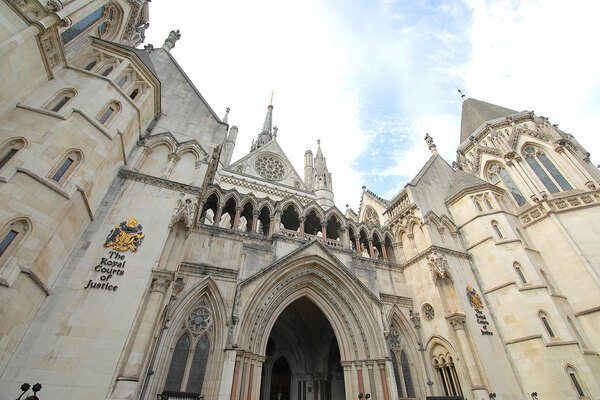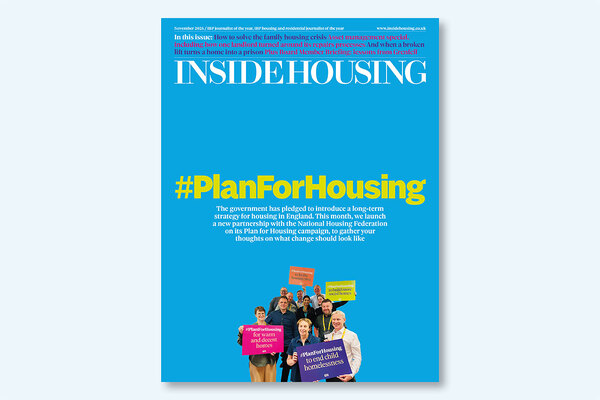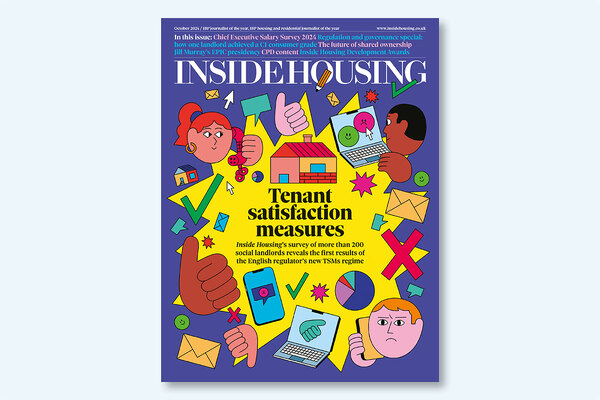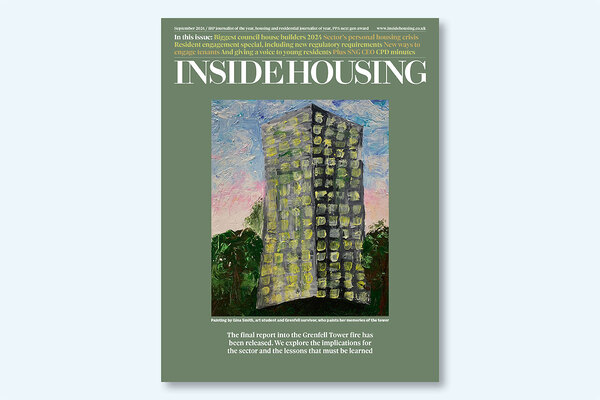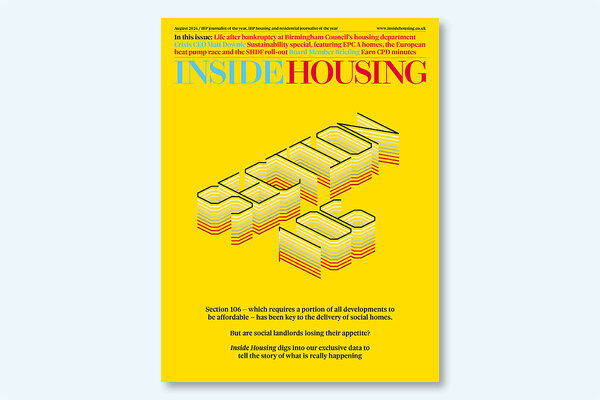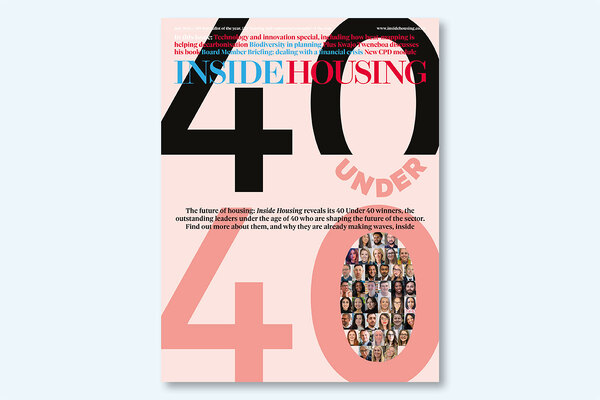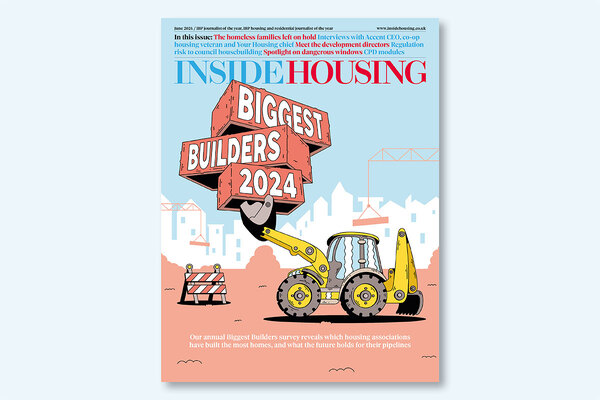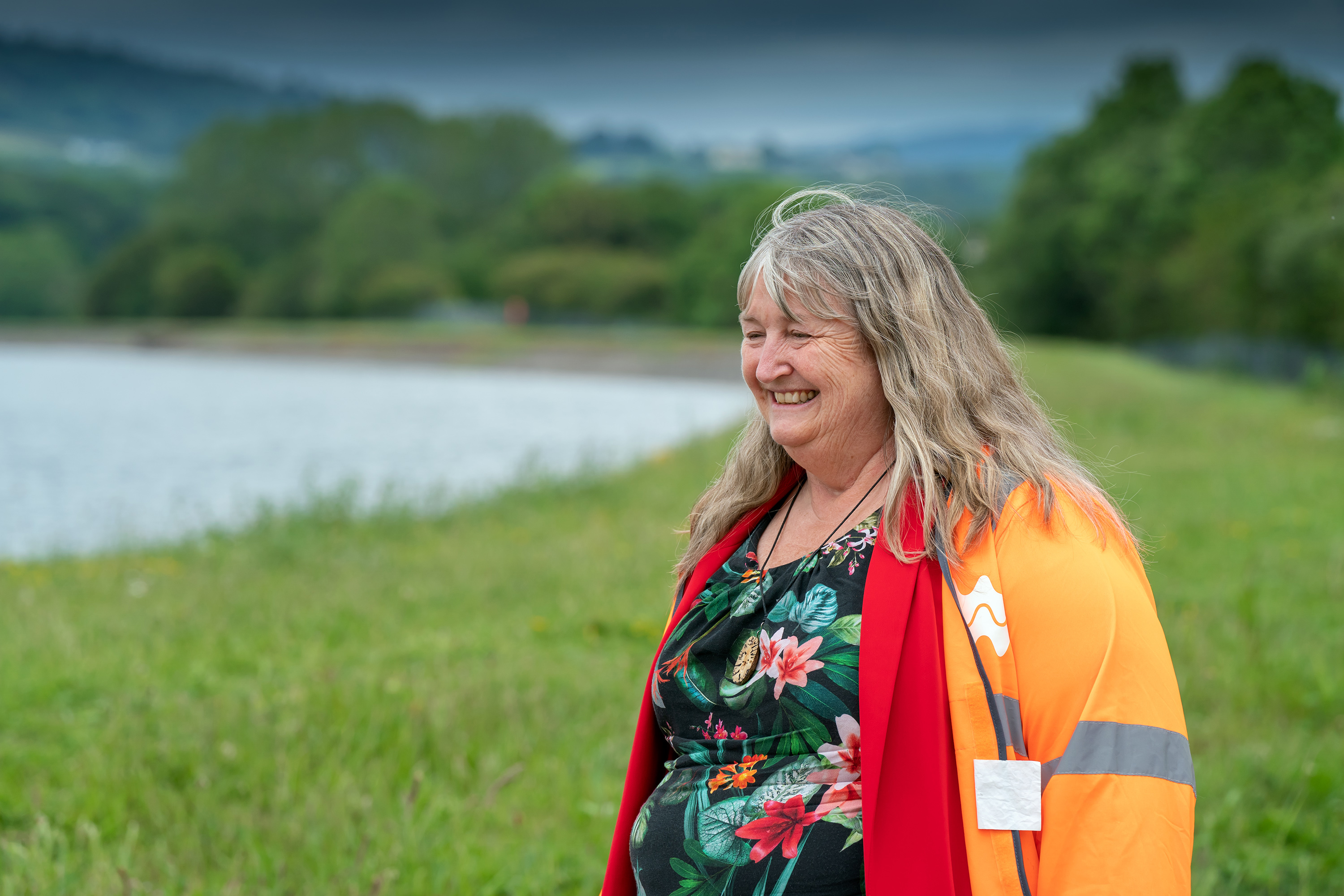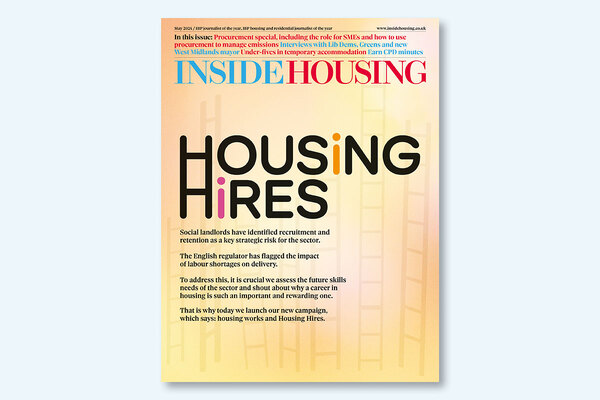You are viewing 1 of your 1 free articles
Why social housing tenants were more exposed to COVID risk
New academic research on COVID-19 transmission at home has uncovered how social rent tenants were more exposed to risks from the disease than people living in other tenures. There are lessons for public health going forward. Rhiannon Curry reports
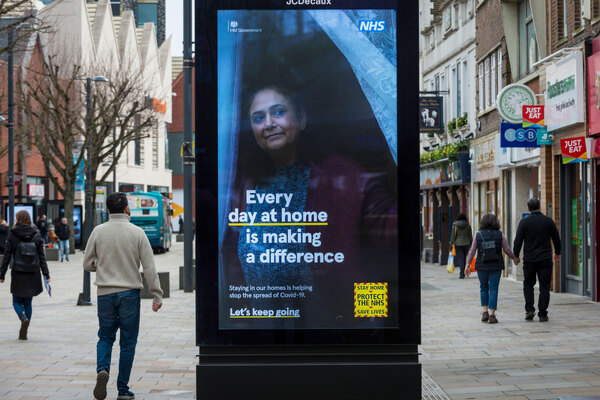
On 23 March 2020, then-prime minister Boris Johnson announced the UK’s first coronavirus lockdown. The message was simple: stay home. Over the next two years, the government introduced various public protection rules aimed at keeping people safe in shared spaces such as hospitals, schools, workplaces, care homes and countless other locations. But how much should the government have interfered in what happened between the four walls of people’s homes?
It is a question academic Becky Tunstall has wrestled with while writing a new book, titled Stay Home to reflect that first government directive, which details how the UK’s housing situation contributed to the way the pandemic played out.
Her research uncovered some shocking statistics: an estimated 26-39% of UK COVID-19 infections occurred at home, meaning that by January this year, infections at home led to an estimated 38,000 to 58,000 deaths.
And while there is no specific medical data that links infection and death rates directly to housing tenure, on average, she found that social renters were at higher risk of infection and death than those in other tenures.
This was because social renters are typically older, have higher rates of disability and are in worse health.
Social tenants’ work also tended to expose them to higher risk, while they often lived in crowded urban areas and deprived neighbourhoods, in flats with less space, and had lower income.
“Staying at home exposed us to risk at home,” Ms Tunstall explains. “This risk wasn’t researched, advised on, legislated about, policed or managed as much as risk at work, school, or in public places. Essentially the risk was transferred from the public sphere to the private – people had to make their own decisions about what to do. Many of these infections at home and resulting deaths could have been prevented through more support to households.”
Shielding
In June and July 2020, 49% of social rent households in England had someone shielding because they were vulnerable, compared to 42% for outright owners, 35% for private renters and 29% for mortgaged owners, Ms Tunstall found. At the same point, 24% of social rent households had someone who had to isolate because they were infected or thought they might be, compared to 24% of outright owners, and 9% of private renters and mortgaged owners.
At the time, the World Health Organisation and Public Health England recommended a spare bedroom, spare bathroom and indoor distancing to avoid infection in households with vulnerable people or COVID-19 cases.
But the government messaging could have gone further, Ms Tunstall believes.
“No one in the government broached the idea that you should wear a mask at home, particularly if someone in the home was infected. It was a no-go area,” she says.
In June and July 2020, only 33% of social rent households had somewhere for a shielder or isolator to sleep alone – not necessarily a bedroom – compared to 84% of outright owners, 72% of mortgaged owners and 49% of private renters.
Only 15% of social rent households had a second bathroom, compared to 47% of outright owners, 46% of mortgaged owners and 21% of private renters.
In addition, data shows that in 2019-20, 9% of social renters were overcrowded, compared to 7% of private tenants and 1% of owners.
A number of the problems COVID-19 raised for people in social housing could have been avoided, or at least lessened, by providing quarantine opportunities outside of the home, Ms Tunstall points out.
“That was provided in some American states and some European and Asian countries. It is a shame that it wasn’t an option [in the UK] to move a vulnerable person away from a person who is infected.”
She cites case studies she encountered where people had “tried very, very hard” to move older relatives away from any danger, or put people in jobs with a higher risk of COVID-19 infections into different homes.
“Some people I came across in research gave up their jobs to prevent risk to their grandparents,” she says.
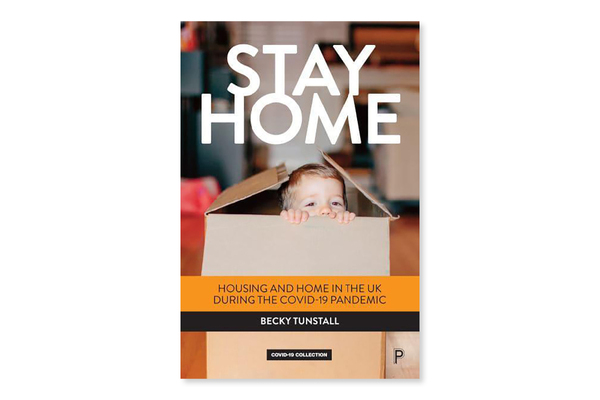
Quarantine facility
A state-provided optional quarantine facility could have really helped families already suffering from overcrowding, she says, and this was provided for some NHS workers and people who were homeless.
“But it came down to the government being unwilling to get involved in people’s private homes,” she says.
While Ms Tunstall’s suggestion could have reduced some infections, communal quarantine facilities, where they were provided, were not without issue.
Last year, a 21-year-old man was charged with raping a 13-year-old girl in a coronavirus hotel in Tel Aviv where they were both in isolation. Closer to home, four women who stayed in quarantine hotels in the UK after travelling from other countries told the BBC they were sexually harassed by private security guards.
In the social housing sector, many local authorities and housing associations worked hard to support their tenants to weather the lockdowns by helping them access financial help, putting deep cleaning regimes and rent forbearance in place.
In numbers
49%
Social rent households which had someone shielding in June and July 2020
24%
Social rent households which had someone isolating during the same period
26-39%
UK COVID-19 infections which occurred in home
“There just wasn’t much guidance on what to do,” Ms Tunstall says. “[Social landlords] were making a lot of it up themselves, partly because the government didn’t want to say much about what went on inside homes.
“There was also a huge gap in guidance on how to manage blocks of flats, including communal areas, so social landlords had to fill that gap.”
Although many evictions were effectively halted and vulnerable tenants offered additional support, many housing associations stopped repairs work – something which Ms Tunstall suggests exacerbated some issues with housing standards and has created a backlog which is likely to take years to clear.
“Improvements in conditions are likely to have paused or reversed, due to disruption to maintenance, and inequalities may have grown,” she points out.
The pandemic depleted the resilience of institutions, business and communities across the board by eating up funds, savings, materials and capacity for work, as well as the workforce’s and volunteers’ energy, she says.
Ms Tunstall adds: “These resources will need to be rebuilt before they can be used again.”
UK response
Compared to some countries, the UK’s response to the pandemic was reasonably wide-ranging, she found.
“That doesn’t mean that everybody was happy and everybody’s needs were met. There were lots of people in quite dire situations financially, and even when there were supportive policies, they tended not to be announced until in quite a long period of uncertainty.”
As to whether any lessons could be learned for a future public health emergency, Ms Tunstall is not convinced.
“The thing that the pandemic has done is spotlighted inequalities which have been there for a long time, and which the housing sector and the government should know about and should be working hard on,” she says.
“One interesting outcome might be the way we think about spare bedrooms, and policies that limit those, such as the bedroom tax. Perhaps we all need a spare bedroom, not just to do yoga in, but because it’s part
of having a home that is resilient to pandemics.”
“Essentially the risk was transferred from the public sphere to the private – people had to make their own decisions about what to do”
The idea that more space is linked to better health outcomes is hardly a new idea, her book points out. When infectious diseases were the principal threat to life expectancy, housing was at the centre of public health risks and initiatives. During the 1918 Spanish flu epidemic, people with 45 sq ft of living space per person had 10 times the rate of illness than those with 78 sq ft.
In the 2010s, the impact of poor housing on health cost the NHS £1.6bn a year, according to one study she cites.
One thing that drove her to write the book was the concern that people would forget what living through the pandemic was like – and what role housing played.
“I’ve been concerned for some years about space inequality. There are underlying absolute needs for minimum space, and we know that contributes to factors such as health, and that being badly off in terms of space is generally bad,” she says.
“Recent policy has meant social housing residents are falling further behind on that front.”
Her research is clear: in normal times, housing problems are linked to tens of thousands of deaths annually.
“The pandemic inequalities in COVID-19-linked deaths rates by region and neighbourhood deprivation were little different from inequalities in death rates by region and neighbourhood deprivation in normal times,” she writes. “Housing and home could be central to building back better, and recovery policies could address some longstanding weakness of the housing system. However, this seems unlikely in practice.”
Ms Tunstall is keen that policymakers take note of the ways that housing is intrinsically linked to the country’s reaction to major health emergencies – before it is too late.
She adds: “Now would be a good time to really understand what people use housing space for.”
Sign up to our Best of In-Depth newsletter
We have recently relaunched our weekly Long Read newsletter as Best of In-Depth. The idea is to bring you a shorter selection of the very best analysis and comment we are publishing each week.
Already have an account? Click here to manage your newsletters.
Related stories
